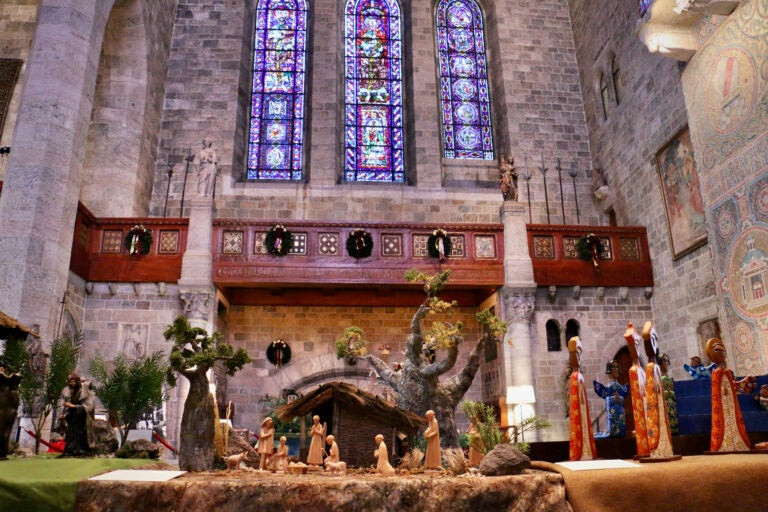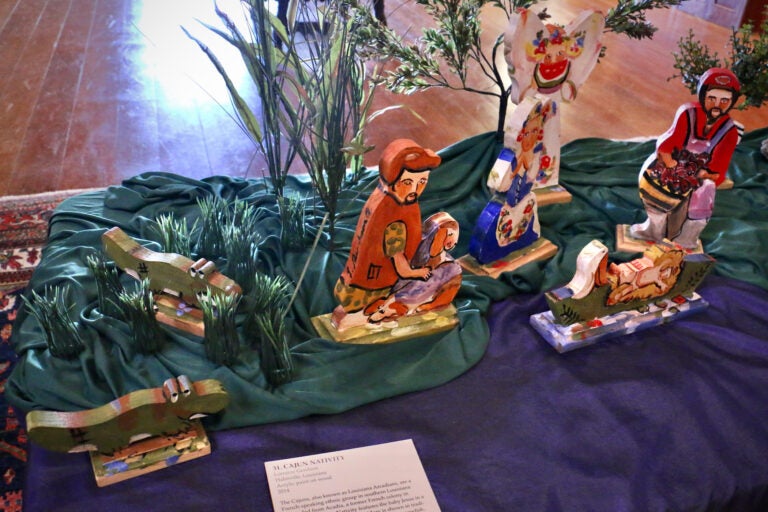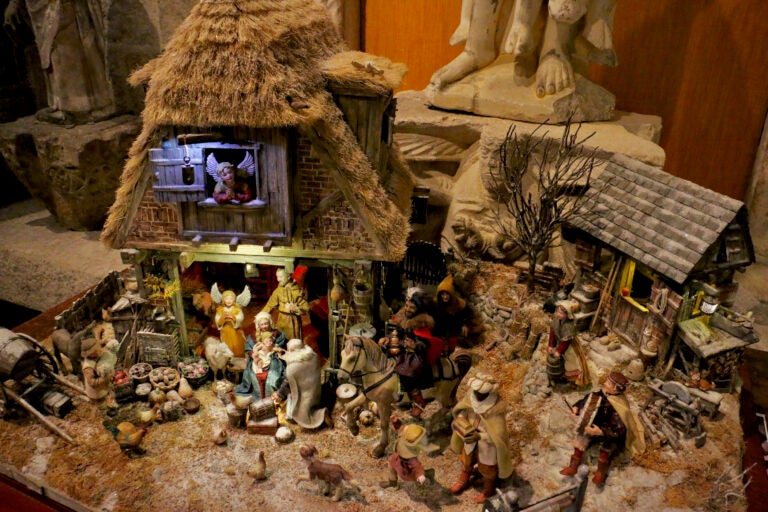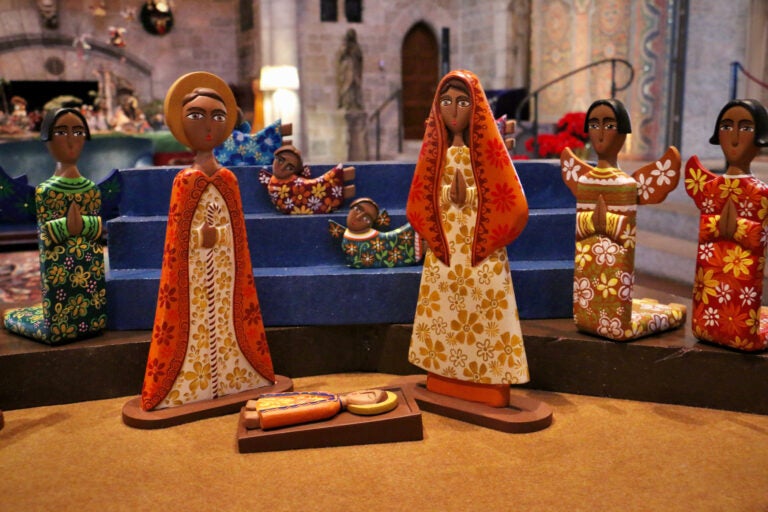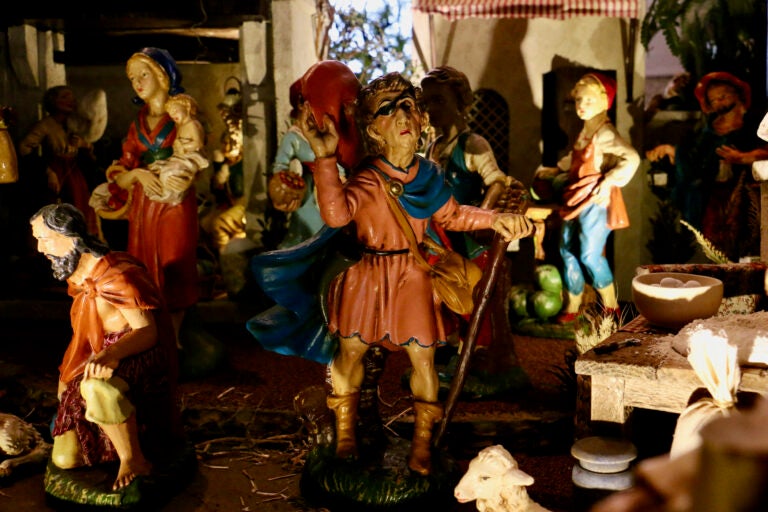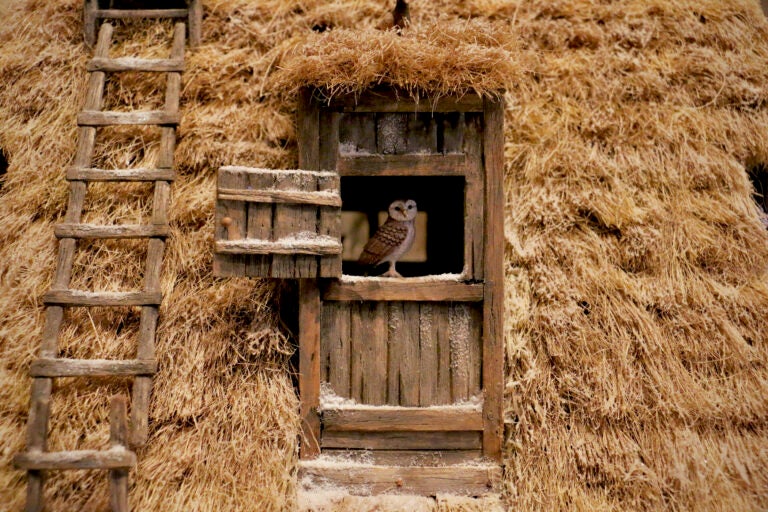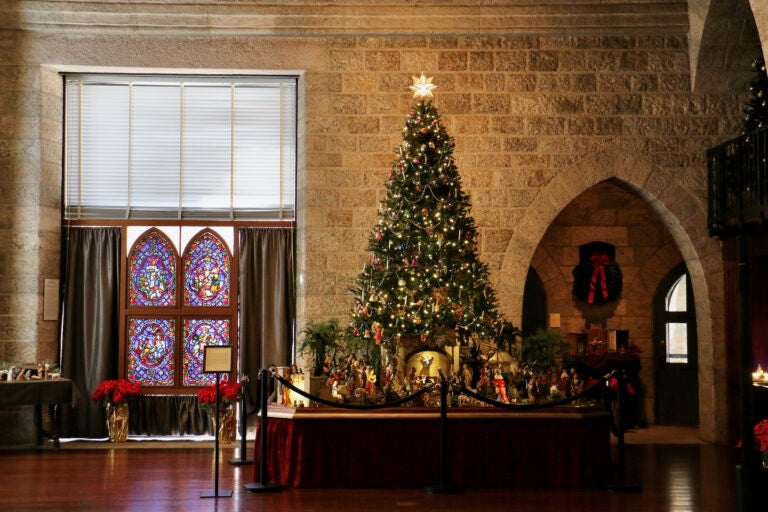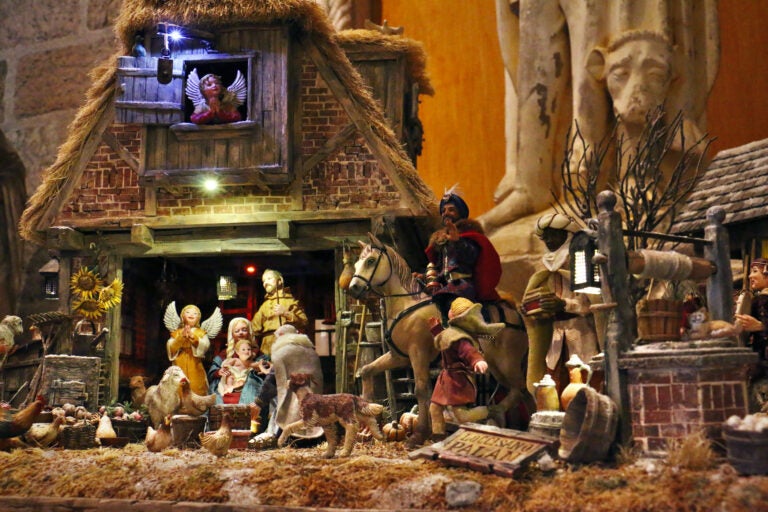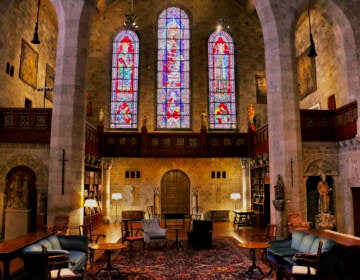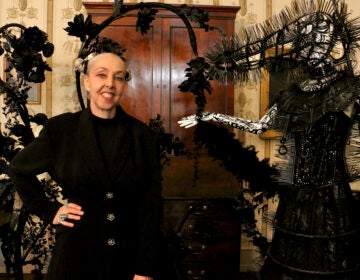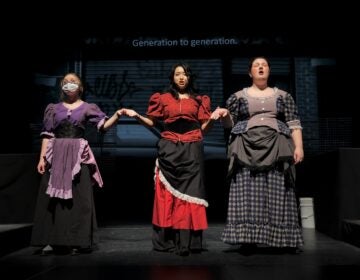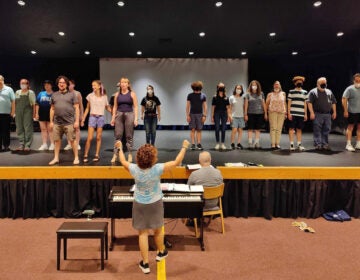800 years after the first nativity scene, Glencairn exhibit highlights wide variation of the Christmas display
This year, the nativity scene has turned 800 years old. Glencairn Museum samples their endless variety.
Listen 2:22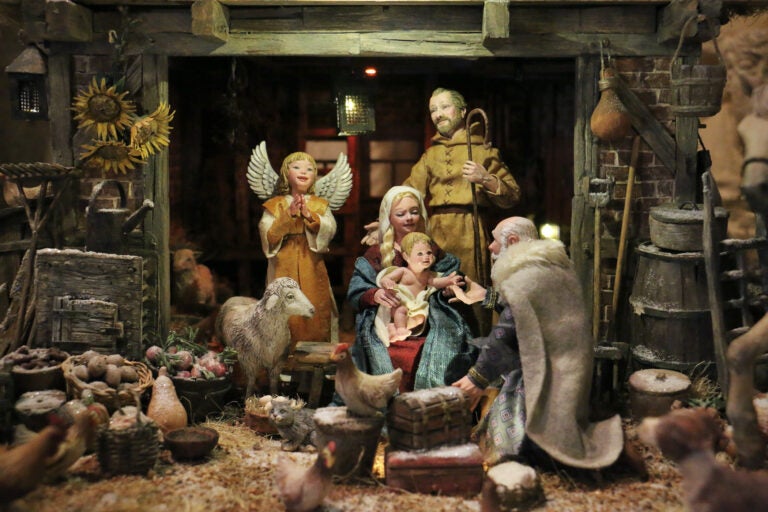
"Flemish Nativity" is based on a 16th century painting "The Census in Bethlehem" by the Flemish artist Pieter Bruegel, famous for filling his compositions with crowds of people and activity. (Emma Lee/WHYY)
From Philly and the Pa. suburbs to South Jersey and Delaware, what would you like WHYY News to cover? Let us know!
This year marks the 800th anniversary of the Christmas nativity scene. In the year 1223, St. Francis of Assisi first arranged a manger scene with live animals inside a cave in the town of Greccio, Italy, where he told the villagers the story of the birth of Christ.
A museum of religious and medieval art in Bryn Athyn, Glencairn, is now basking in the diversity of nativity interpretations that have developed over the last eight centuries. The annual exhibition of nativities collected from around the world features almost 50 scenes representing dozens of countries, such as Kenya, Nicaragua, Ukraine, and Italy.
Although the basic nativity arrangement of a father, mother, and child remains consistent, the variations are broad and culturally specific. A nativity from Louisiana, for example, features alligators instead of livestock, and one of the wise men is playing a saxophone.
Director Brian Henderson says this year is special because the exhibition marks the re-opening of Glencairn. It was shuttered for 18 months as its castle-like building underwent substantial infrastructure renovations.
“It really is thrilling to be able to welcome our visitors back,” he said. “To see the smiling faces of our visitors back in this magnificent space — it’s really heartwarming.”
For A.J. DiAntonio, of Malvern, nativity scenes have been a life-long fascination. He recalls being drawn to the family nativity at 2 years old, so much so that his parents gave him his own set to play with. He’s been collecting them ever since.
“I would make nativities out of people’s toothbrushes,” he said. “I always had the small toothbrush because I was a little kid, and I’d walk into my grandparents house and see toothbrushes there. They looked like people with heads and bodies. So I would make the nativity out of toothbrushes.”
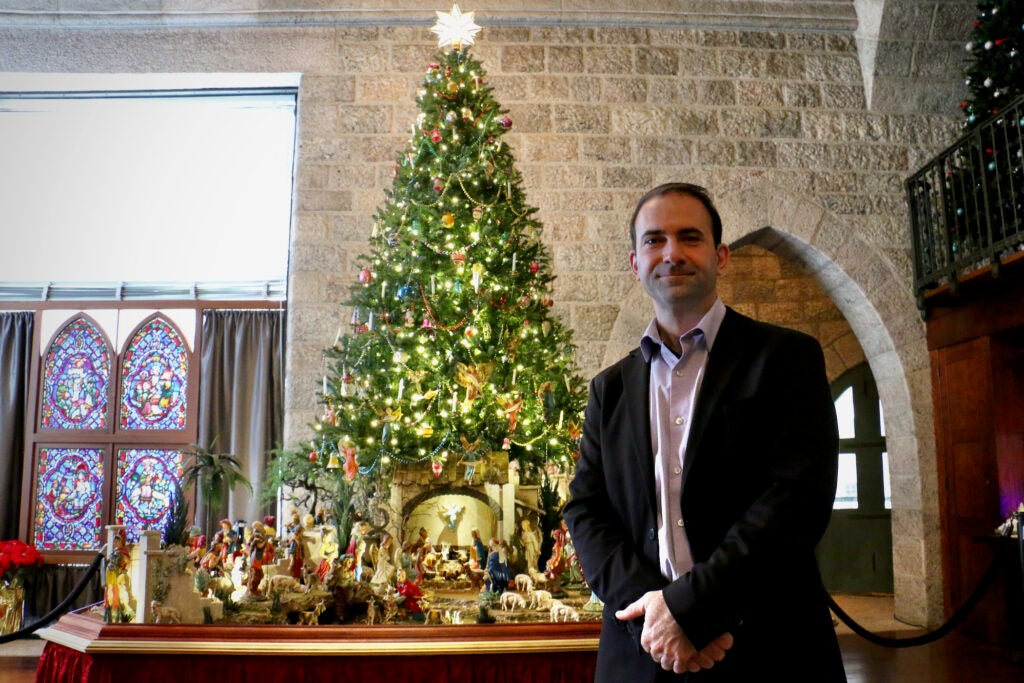
DiAntonio turned his obsession into a business, Navidad Nativity, which collects vintage and contemporary artisan figures and builds elaborate nativity scenes for clients. For Glencairn, he made a sprawling “presepe,” an Italian-style scene that presents the visitation of Christ within a busy village scenario. His scene encompasses 100 square feet, populated by 178 vintage figures made by Tuscan artisans. DiAntonio arranged them into dozens of little dramas around the central narrative of the manger.
“I had all the figures on shelves in my apartment,” he said. “Like Mr. Rogers and his Neighborhood of Make Believe, I take things down off the shelves, come up with a different little vignette, start working on another one, and then eventually see if they all meld together. Somehow I got lucky.”
Karen Loccisano and Michael Palan, of Bridgewater, N.J., contributed a nativity they crafted by hand that is also filled with mini-stories surrounding the central figures of Mary, Joseph, and the infant Jesus. “Flemish Nativity” is based on a 16th-century painting “The Census in Bethlehem” by the Flemish artist Pieter Bruegel, famous for filling his compositions with crowds of people and activity.
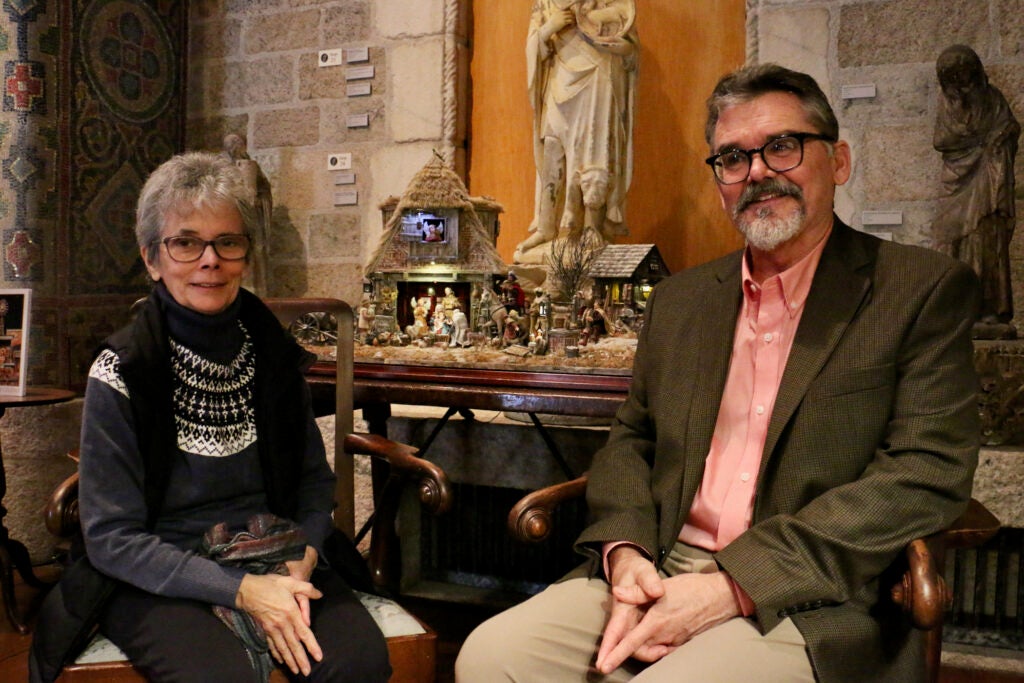
The married couple has been hand-crafting highly detailed, one-of-a-kind nativity scenes for over a decade. Loccisano makes the figures and her husband Palan builds the scenery. In “Flemish Nativity,” they created a 16th-century Flemish tableau, complete with visiting wise men, curious onlookers, a musician who appears to be waiting for the rest of the band to arrive, and an active farm with lots of chickens and cats.
Those who look carefully at the visiting angel will notice they have facial features distinctive to people with Down Syndrome.
Loccisano said they were inspired by another 16th-century Flemish painting where one of the angels clearly has the face of a person with Down Syndrome. The image by an unknown artist is believed to be the first-ever depiction of someone with the condition.
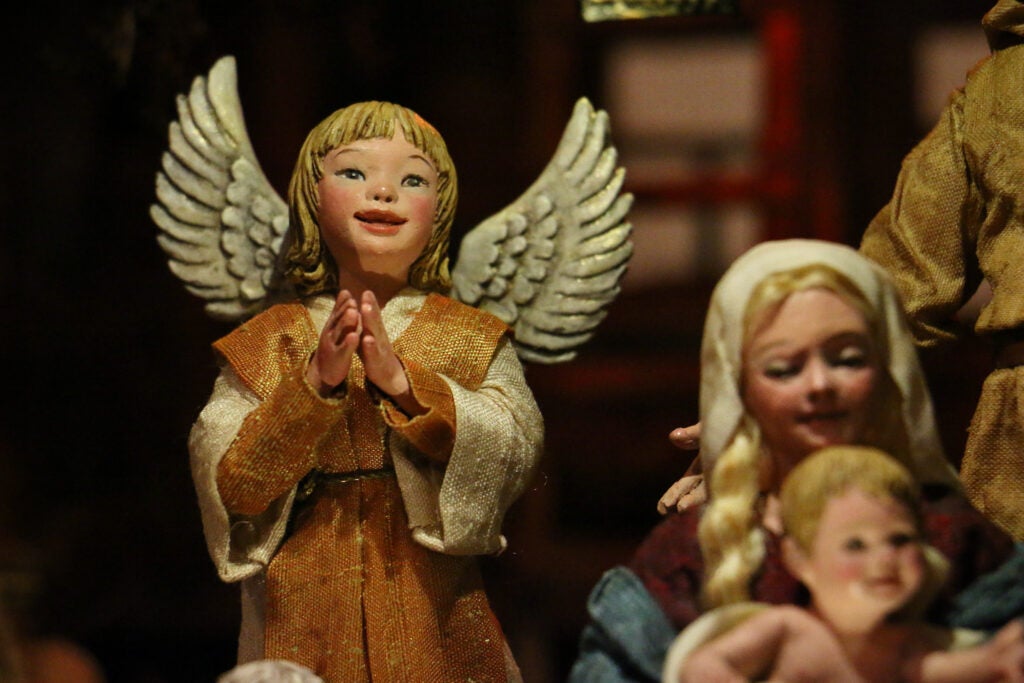
“It may have been a child of the patron, but as an angel. We’re all equal in heaven regardless of a handicap,” she said. “They don’t really know the story, but they speculate.”
Loccisano and Palan are both commercial artists who have mostly worked in children’s publishing, creating illustrations in kids magazines like Highlights as well as product design for Christmas decorations.
“I’ve done at least seven or eight Claras from the Nutcracker,” Loccisano said.
“I once designed a set of beer mug strand of lights. It took me, I think, 45 minutes on Tuesday afternoon,” Palan said. “We still get royalty checks for that.”
The couple started making nativity scenes for their own enjoyment.
“We were always working with deadlines and budgets, and we just wanted to do something to the very best of our ability without any concern for how long it took or what it may be worth,” Palan said.
Their hobby has made them stars in the nativity world. One of Loccisano and Palan’s nativity scenes, depicting a 1930s-era Dust Bowl farming family migrating west, has been accepted by the Vatican. It is the only scene from the United States on view in the Vatican’s display of nativities from around the world.
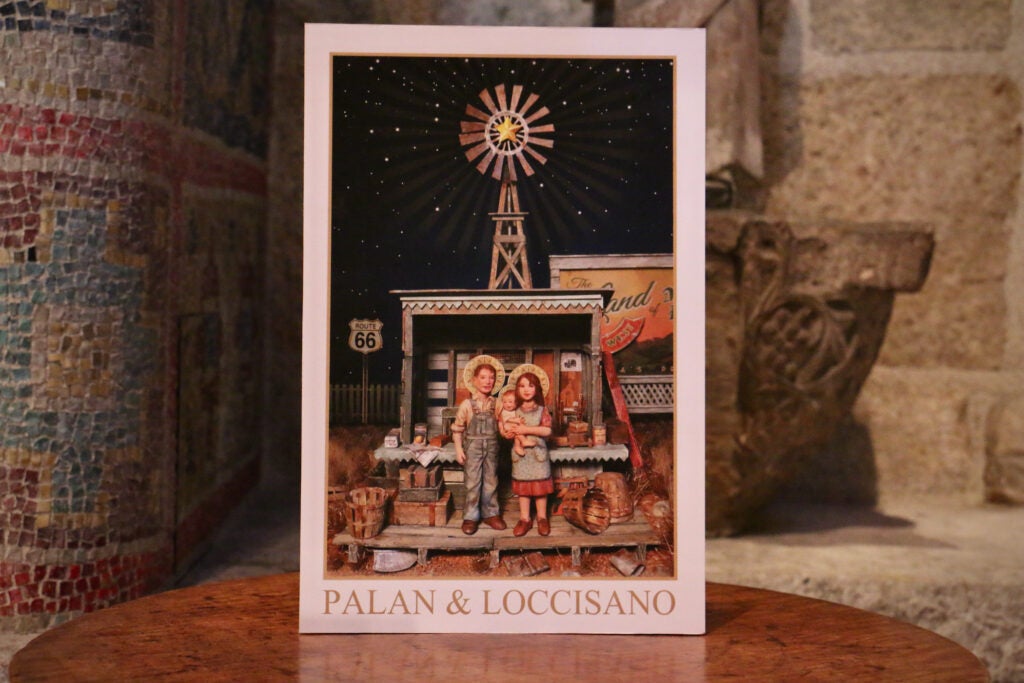
“It’s pretty exciting,” Loccisano said. “Just to be able to say, ‘Oh, yes, my piece is in the Vatican,’ you feel like you did something.”
“It’s not that I didn’t feel we were legitimate, but it feels like it really makes us legitimate,” Palan said.
The couple takes great care of the details in their scenes. The clothes are mostly made of silk so that they drape better on their figures’ little bodies. Palan said he designed the chicken coop with tiny eggs inside, which no one will see because the coop is closed.
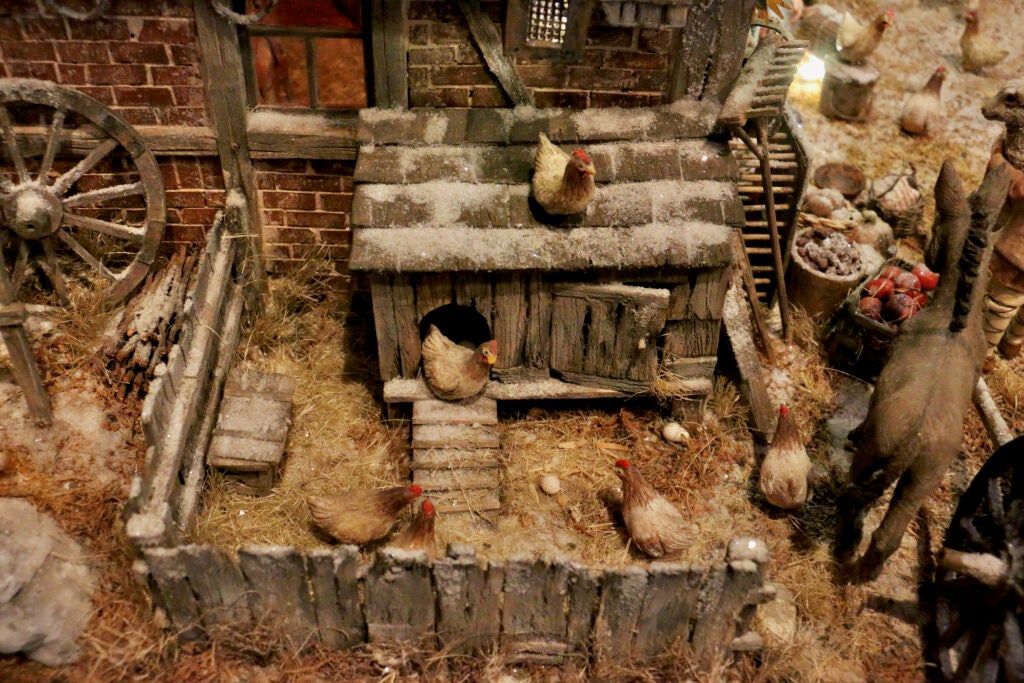
“One night I made two tiny little mice and I put them in there,” Loccisano said. “I said, ‘Michael, I added something. Can you find it?’ We tell little kids to look for the mice, look for the cats. It’s nice having little stories going on.”
The Glencairn display downplays the 800th anniversary of the Christmas tradition. Aside from a painted tile mosaic of St. Francis in a corner of the museum’s Great Hall, there is little mention of the original scene in Greccio in 1223.
“We chose not to celebrate that moment specifically as a centerpiece,” said Henderson.
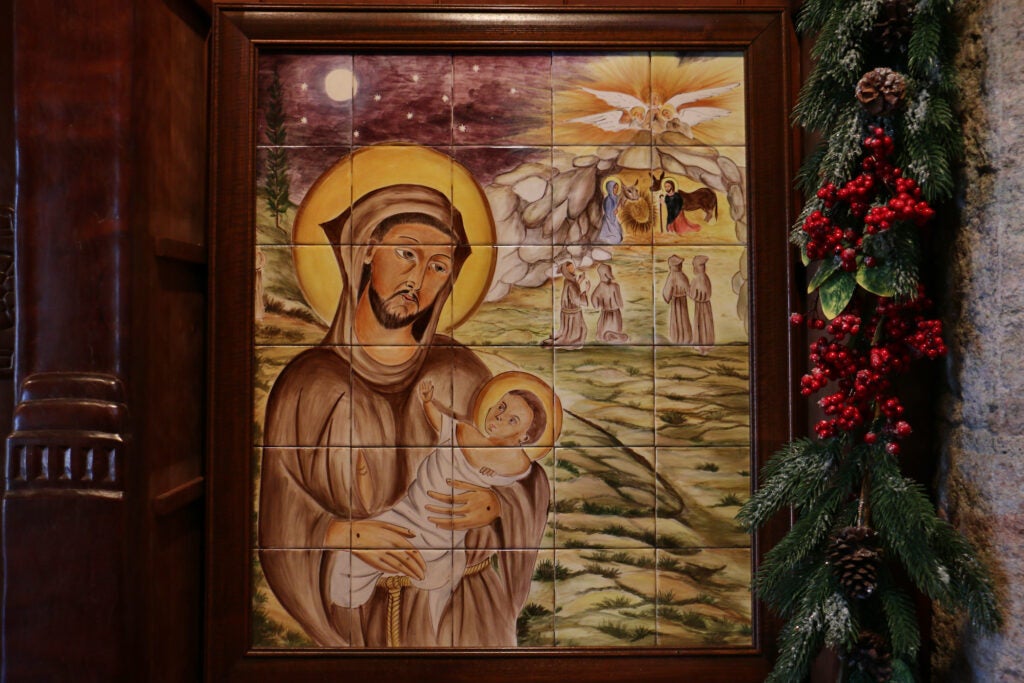
The 800th anniversary is on the mind of DiAntonio. Although he identifies as Catholic and his livelihood is connected to Christmas tradition, he said he is not very religiously observant. However, he said a visit to Greccio earlier this year was the most spiritual trip he had ever taken.
“I’ve been to a lot of great places. I’ve spent time in the Necropolis, in the Vatican. I’ve been all over Europe. I’ve been to mountaintops — all these places that inspire this connection to the higher,” he said. “I’ve never been more touched than spending time in that cave in Greccio.”
“World Nativities” at Glencairn will be on view until January 28. During Glencairn’s closure for renovations, several of its medieval artifacts were put on display at the Philadelphia Museum of Art. That display has been extended until March 10, 2024.

Get daily updates from WHYY News!
WHYY is your source for fact-based, in-depth journalism and information. As a nonprofit organization, we rely on financial support from readers like you. Please give today.



